Service management and QoS
Overview
The NFM-P supports the configuration of the following network services:
An NFM-P operator can create, configure and delete services on sites and routers that are within their span of control.
An administrator can configure NFM-P system preferences related to service creation and deletion; see the procedure to configure NFM-P system preferences in the NSP System Administrator Guide.
The benefits of the NFM-P service model include:
-
service management using configuration forms and a navigation tree
-
service priority setting to manage service deletion: low priority services can be deleted by simply ticking a box in the confirmation dialog. Medium priority services can be deleted by confirming the priority. High priority services can only be deleted by a user with administrator rights.
-
linking of services to create composite services that support complex customer applications
-
policies that specify the NE traffic classification, policing, shaping, time of day restrictions, and marking
-
traffic management capabilities to customize the delivery of different services according to SLAs
Customer traffic enters a service through one or more access interfaces. In a local service, all access interfaces are on one NE. In a distributed service, multiple NEs are deployed at the PE. Customer traffic is transported across an IP/MPLS core network in unidirectional service tunnels that use GRE or MPLS LSPs. Many services can use the same tunnel.
Figure 70-1: Distributed VLL service
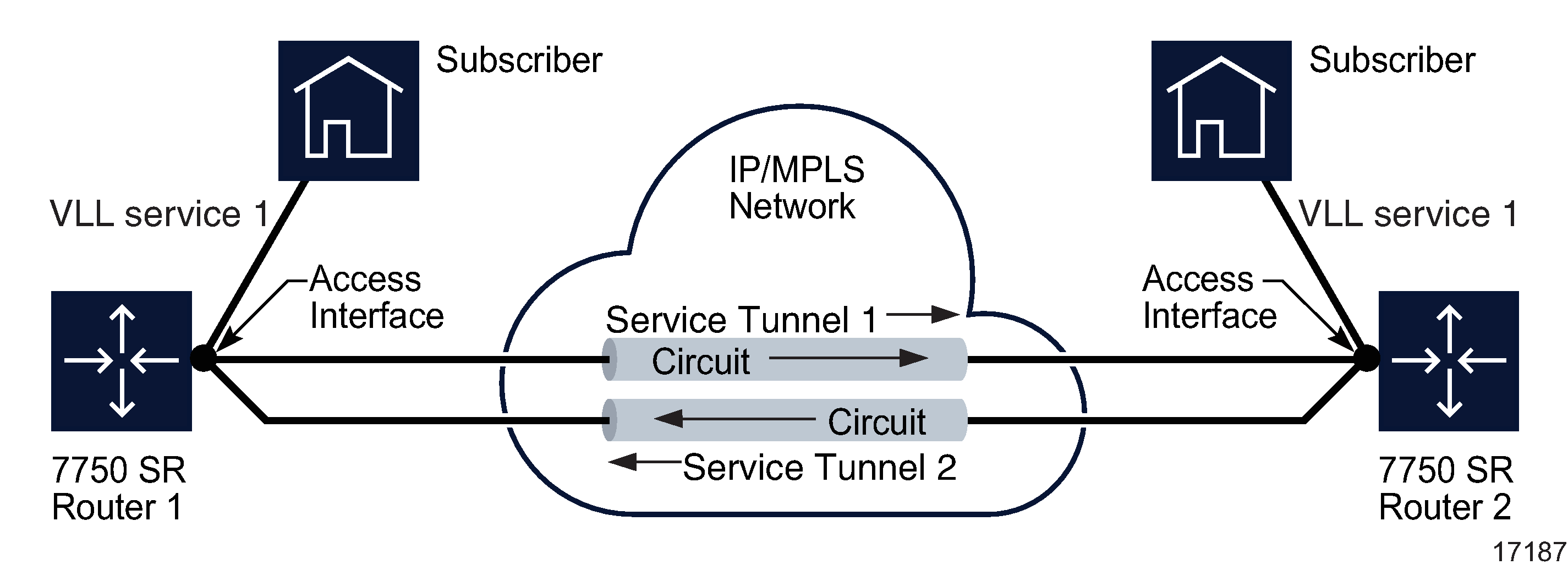
Figure 70-2: Distributed VPLS
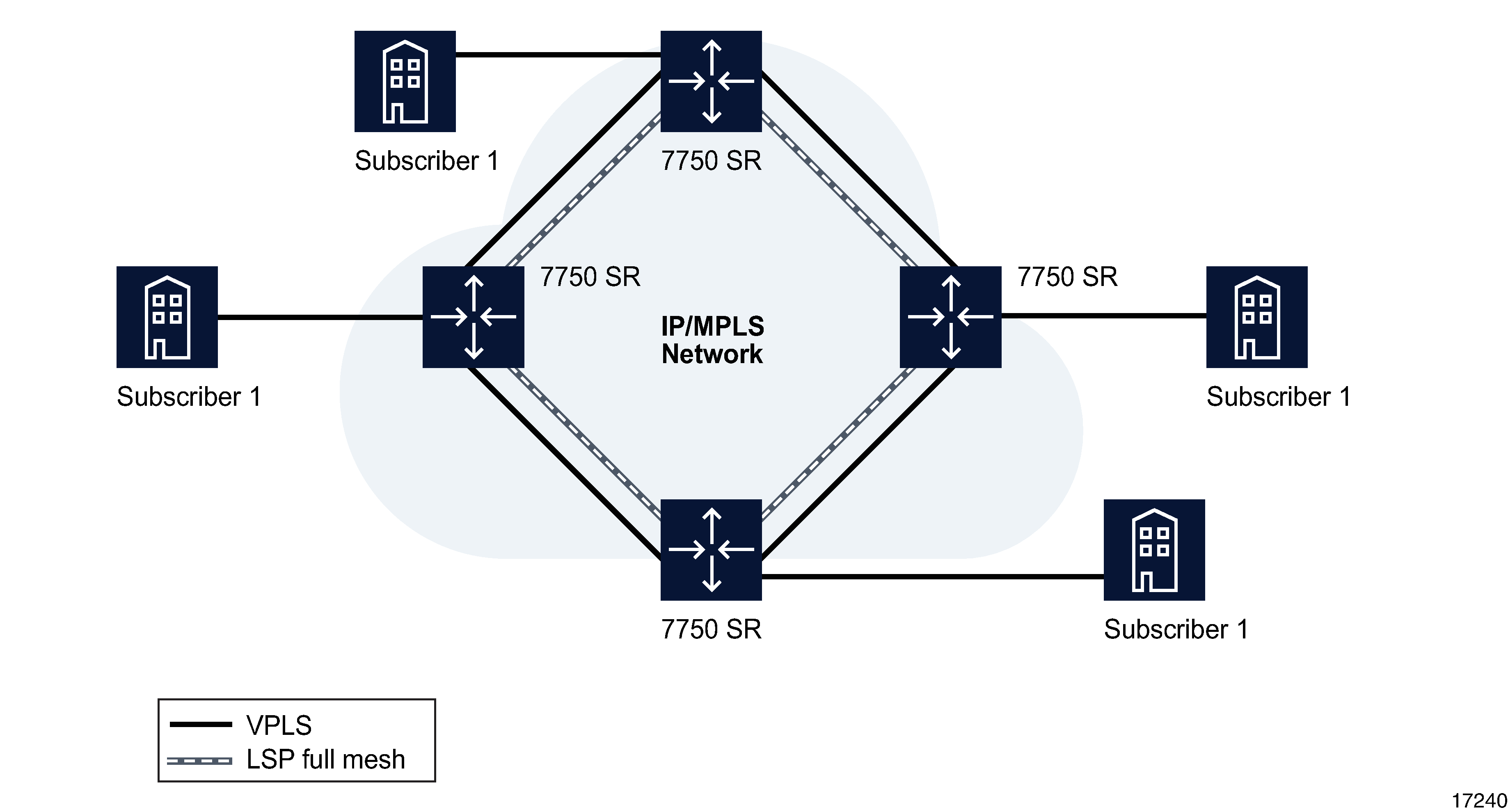
For IES, the managed devices are deployed at the provider edge and customer traffic enters the service using access interfaces. IES is a routed connectivity service where the customer communicates with an IP router interface to send and receive Internet traffic.
Figure 70-3: Sample IES
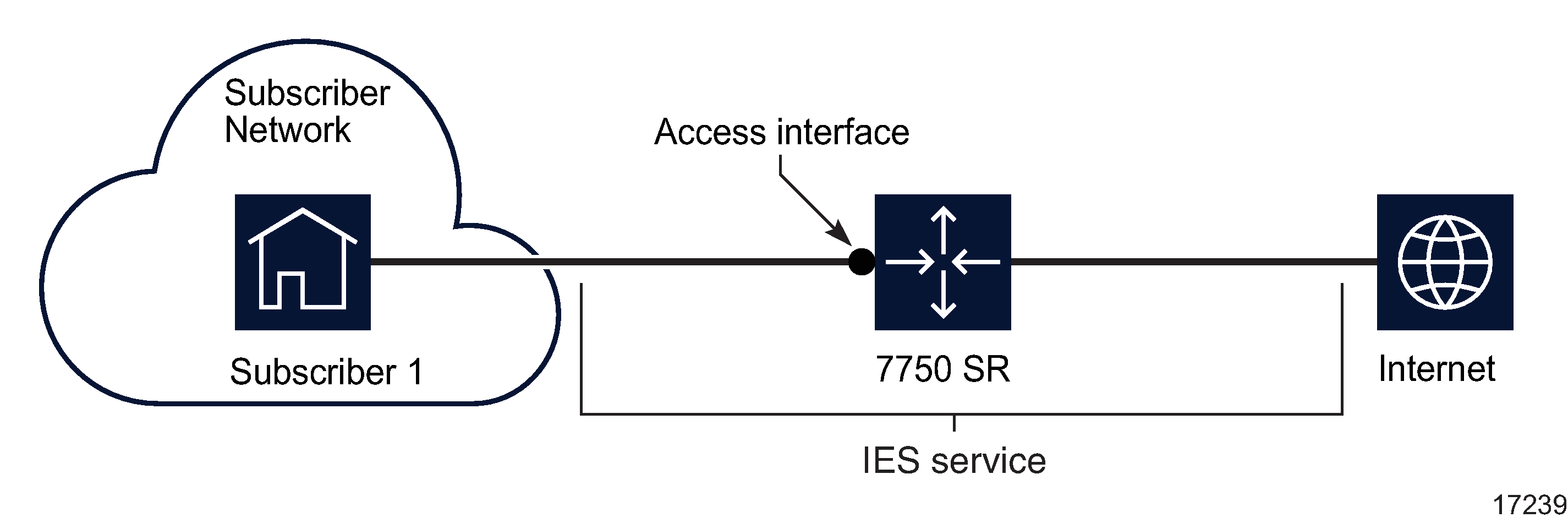
For VPRN services, the managed devices can be deployed as PE or provider core routers. Data and routing information are forwarded across an IP/MPLS service provider core network.
Figure 70-4: Sample VPRN service
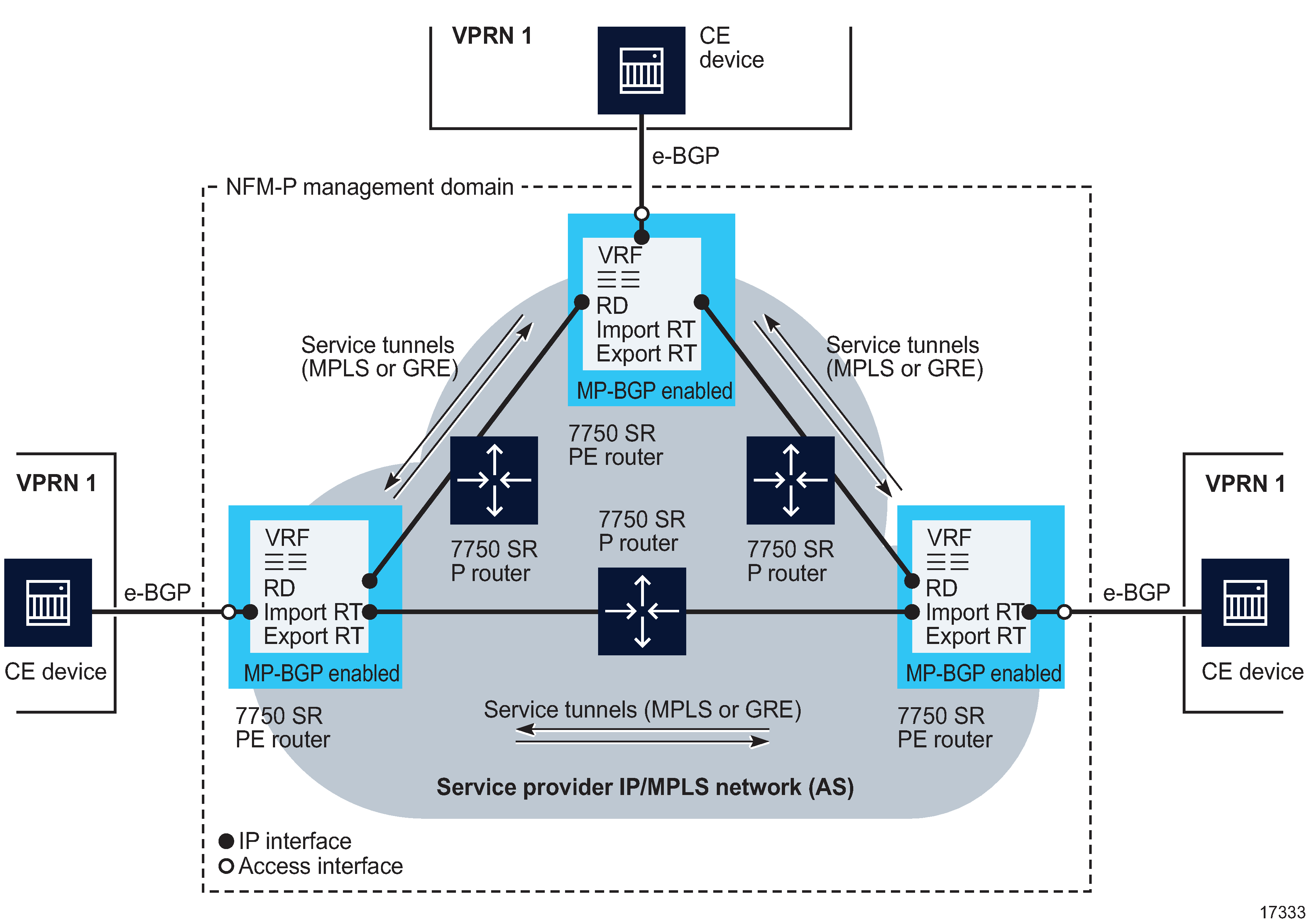
VLAN ring groups are used to send traffic across an Ethernet ring using copper or fiber optic connections from the source traffic device, for example, a 7450 ESS, to all devices in the ring. Any breaks in the physical links between devices are rerouted.
Figure 70-5: Sample VLAN configuration for L2 VPNs
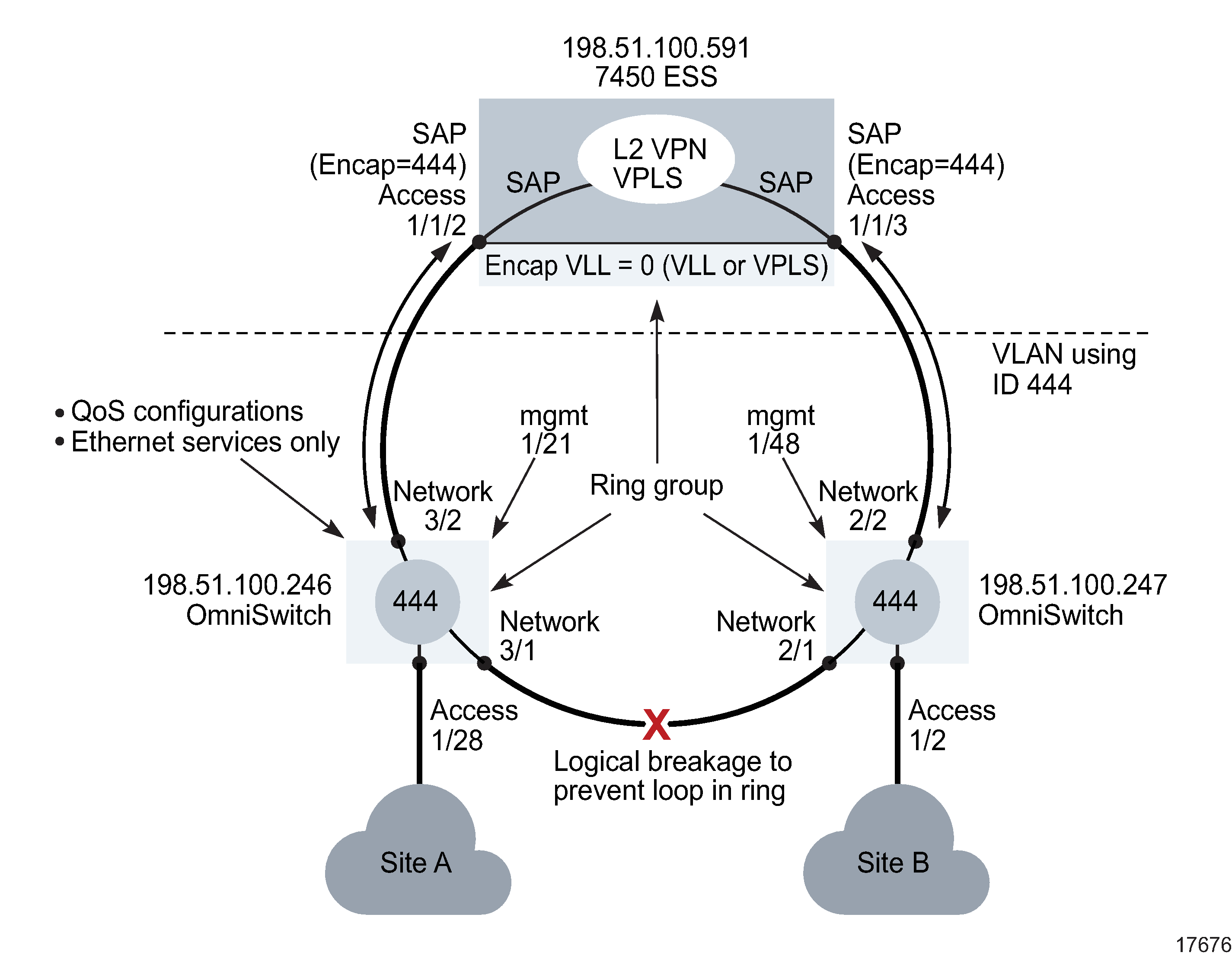
A composite service allows the interconnection of different service types to form a service delivery network that is tailored to a specific application. For example, VPRN, VPLS, and VLAN services can be joined to create a routed multicast TV distribution mechanism that spans a wide geographical area.
A mirror service is a unidirectional service function that duplicates a specified traffic stream and sends the duplicate stream to a monitoring device for troubleshooting or surveillance purposes. With pseudo-wire redundancy support, an ICB can be enabled in a mirror service spoke and a remote source, which can provide bidirectional service that enables support for active and standby PE redundancy.
QoS provides the ability to rate limit across multiple queues from one or more access interfaces for a customer, and to differentiate service levels for different types of traffic. For higher priority traffic such as VoIP or video, you can specify reserved bandwidth. Lower priority applications, such as data traffic, may not have reserved bandwidth but can burst to use all the available bandwidth.
The main elements of QoS are:
-
Customer traffic may be marked with QoS markings, such as DSCP, EXP, and dot1p, that are mapped to forwarding classes.
All forwarding classes support profile marking of packets as in-profile or out-of-profile. In-profile packets have a high enqueuing priority. Out-of-profile packets have a low enqueuing priority. Profile marking of packets can occur at two points: when packets are classified into forwarding classes at access ingress and when packets are classified at service egress. Profile marking is only done on the internal header and not in an actual encapsulation.
-
Provide network elements with a method to weigh the relative importance of packets, only in relation to other forwarding classes. A forwarding class is also referred to as a Class of Service.
-
Location for buffering packets that are to be forwarded before they are scheduled.
-
Hardware scheduling (or single-tier scheduling) exists by default on a device and consists of a high-priority and a low-priority scheduler.
Scheduler policies (or multi-tier scheduling) provide a more complex, hierarchical structure of virtual schedulers that override the default hardware behavior for more flexible scheduling capabilities.
-
Define the WRED slope characteristics of hardware buffer space that is used by the ingress and egress queues
See Chapter 49, Policies overview for more information about policies on the NFM-P. See the 7750 SR OS Services Guide for more detailed information about QoS.